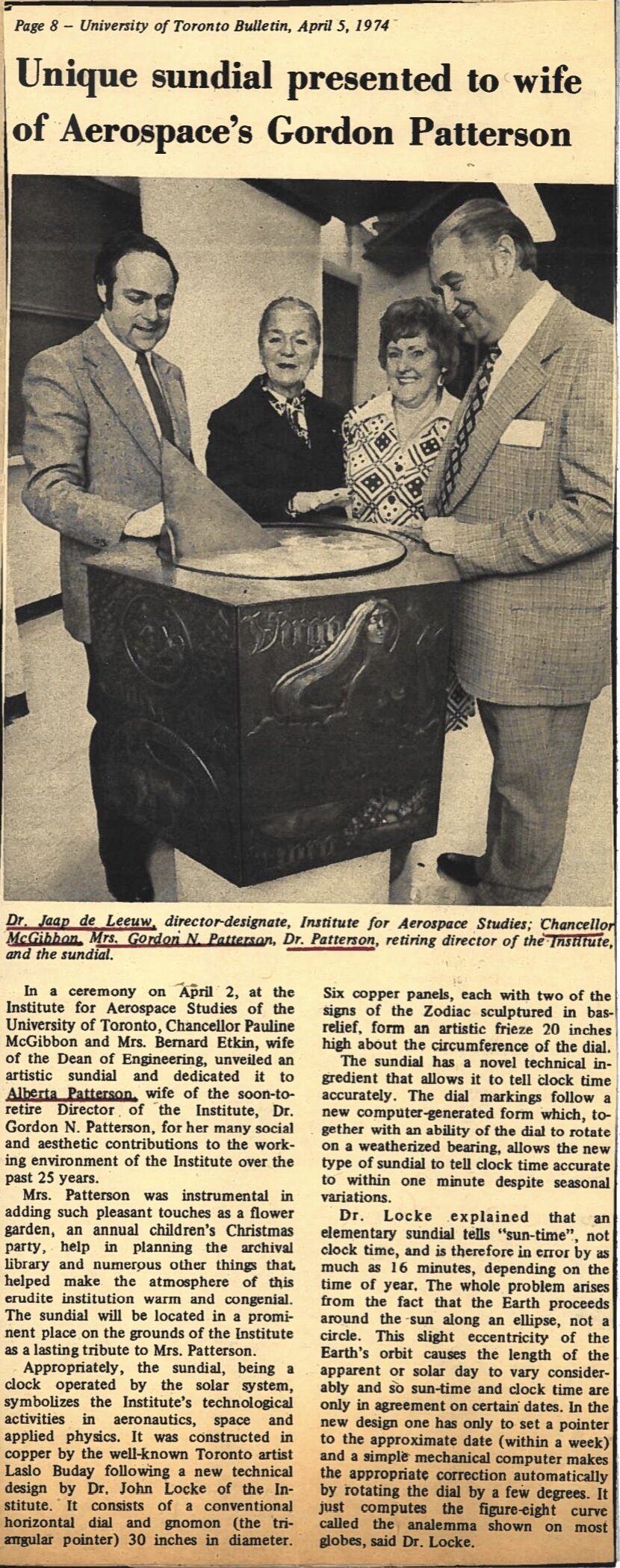In 1974, the announcement was made that Dr. G.N. Patterson and his wife Alberta would be retiring from UTIAS. Although Alberta was never on the payroll, she had played a crucial operational role at UTIAS and she was also retiring.
In honour of all that Alberta Patterson had contributed to UTIAS, she was presented with a sundial – the sundial that you walk past as you approach the entry to UTIAS. But this is no ordinary sundial. This sundial was designed by Dr. John Locke from UTIAS, and the following article explains what makes it unique (I have enlarged the portion of the article with the technical explanation):


In all the years that I worked at UTIAS, I had no idea that the UTIAS sundial had moving parts. I now wonder if the parts can still move given that nobody I am aware of has tried to use the sundial in years.
Perhaps a curious student will try the sundial and report back...
And FYI, the copper sundial was made by Laszlo Buday, the same artist who created the copper panel in the Archival Library.
Update on last week’s email:
We now know that the first woman to graduate from UTIAS with her MASc was Jean MackWorth. Jean graduated from U of T in 1963 with her undergrad in Honours Maths and Physics. After working as a summer student at UTIAS for 3 of those years, she then did her MASc with Prof. Etkin. Jean married fellow UTIAS student David Surry, so on February 12, 1965, she graduated with her MASc as Jean Surry.